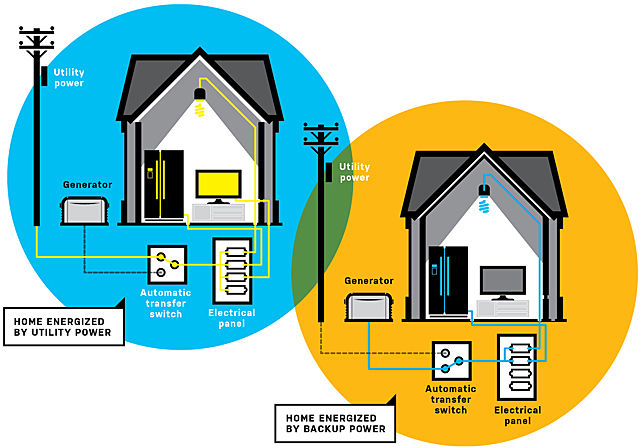1. What They Are?
Standby generators offer a steadfast solution to extended outages. Unlike portable generators, they’re installed permanently on a concrete pad in your yard and will provide uninterrupted backup for days. That’s because they’re connected through a transfer switch to your home’s electrical panel and powered by an external fuel supply.
The brains behind the operation is an automatic transfer switch that detects an interruption in service due to no power or unhealthy power from your usual supply. The switch starts up the generator before transferring its power to the home’s electrical panel. At the heart of the system is an internal combustion engine, which is usually powered by fuel. Keep in mind these systems rely on a finite amount of fuel that could run dry if storm damage prevents delivery or increased demand hampers supply.
When power resumes, the switch shuts down the generator, once it detects that an acceptable power supply is restored and reconnects the load to the utility. Power is now restored to your house or business. This seamless operation makes standby generators ideal for families with small children, as well as those needing uninterrupted use of electric-powered medical equipment. They’re also crucial for anyone running a home business. The transfer switch acts as a safety mechanism too: It prevents back-feeding electricity to the utility, a potentially lethal practice that can start fires and harm utility workers attempting to restore your neighborhood’s power.

